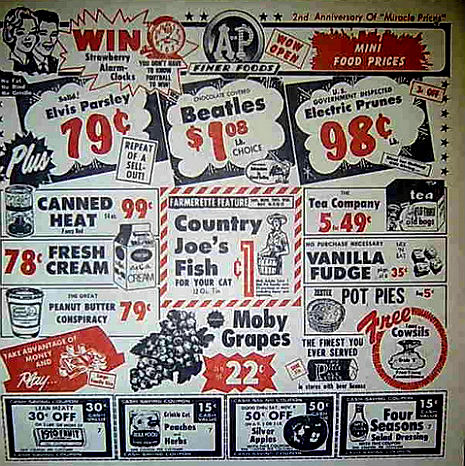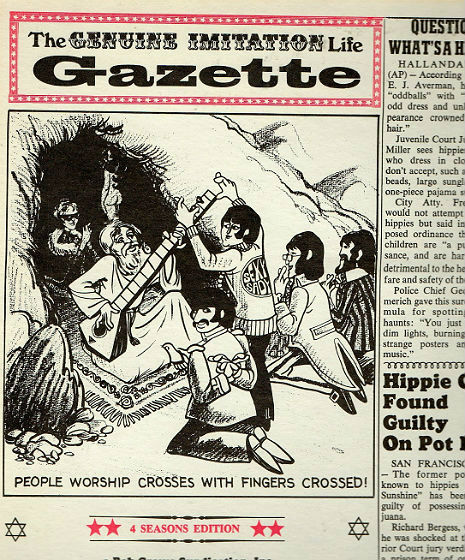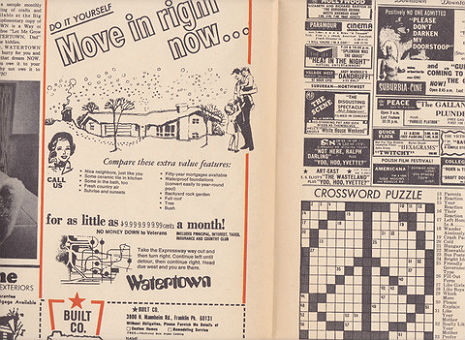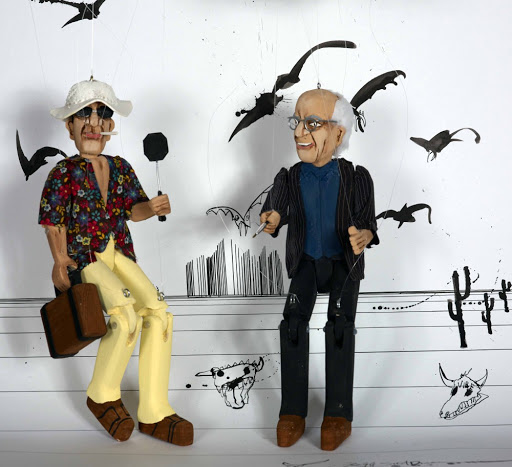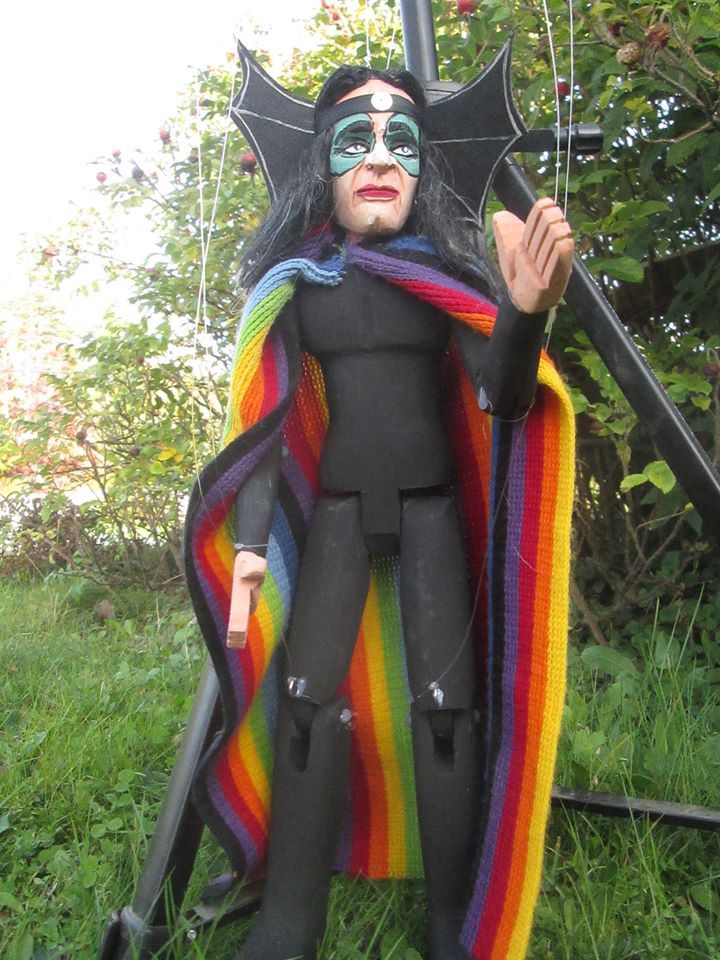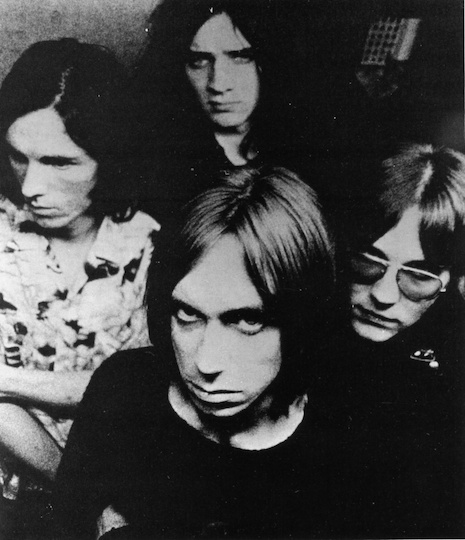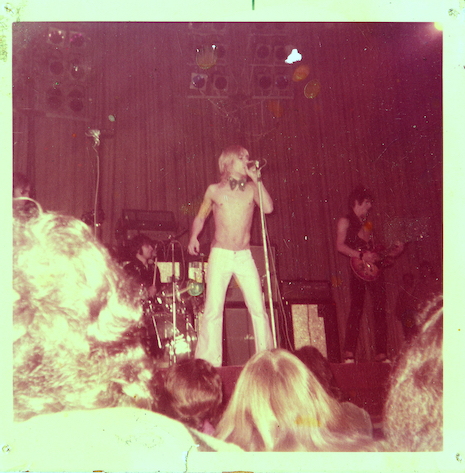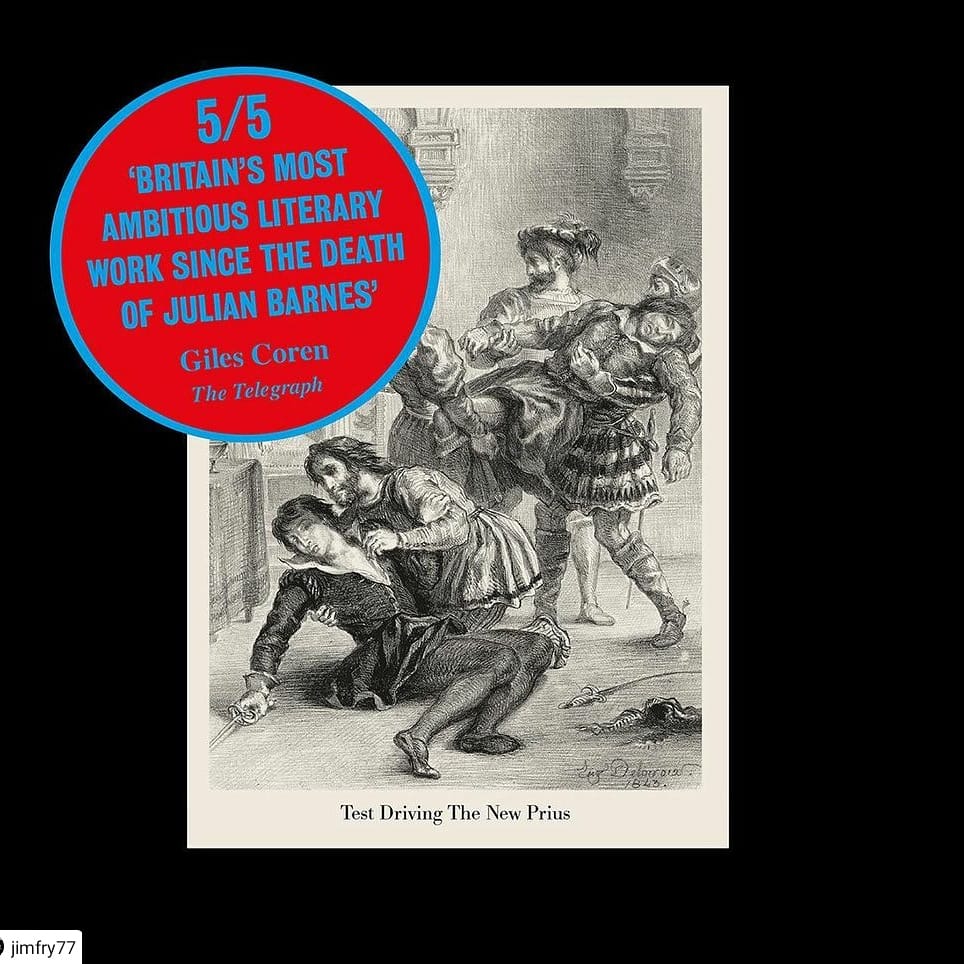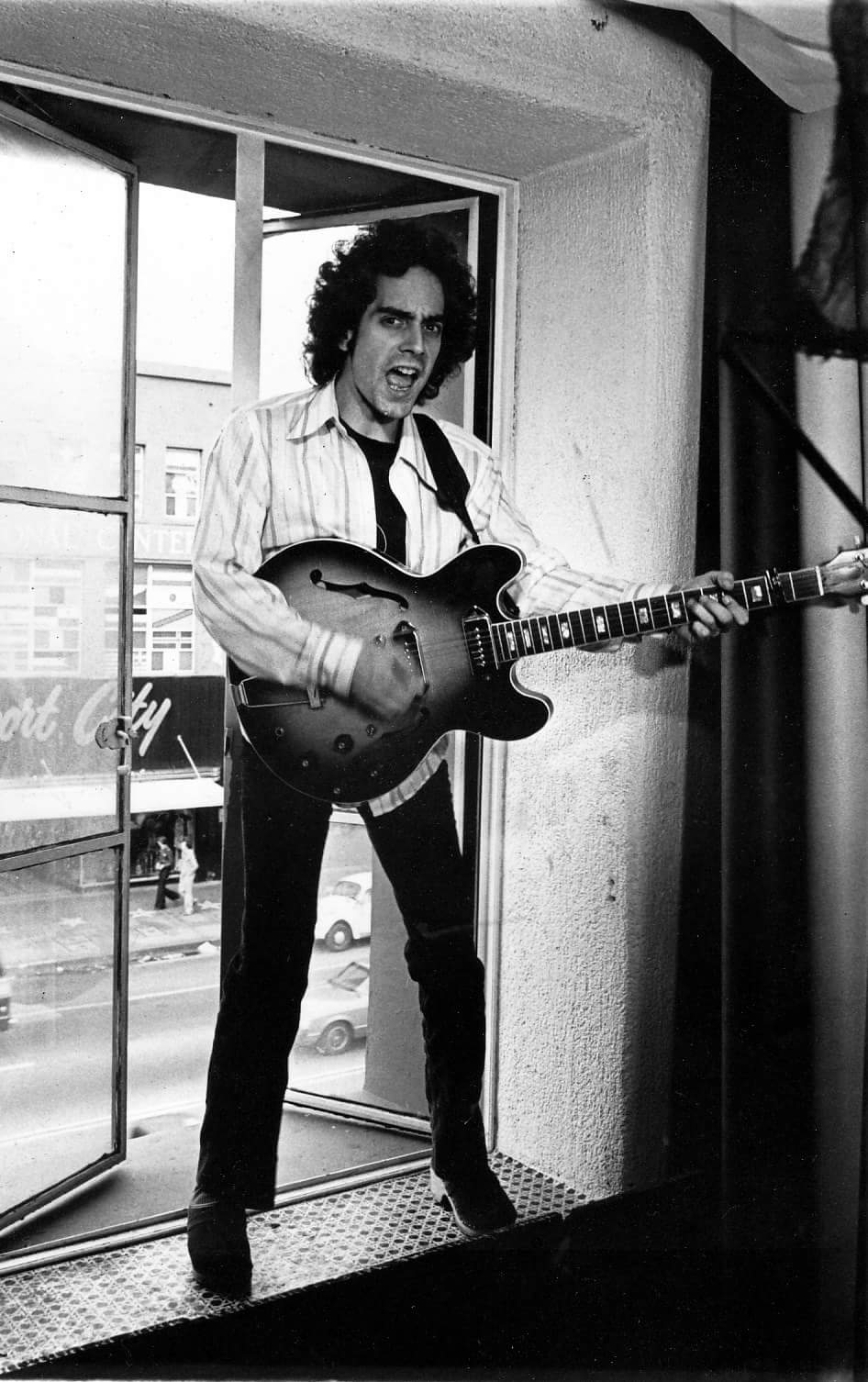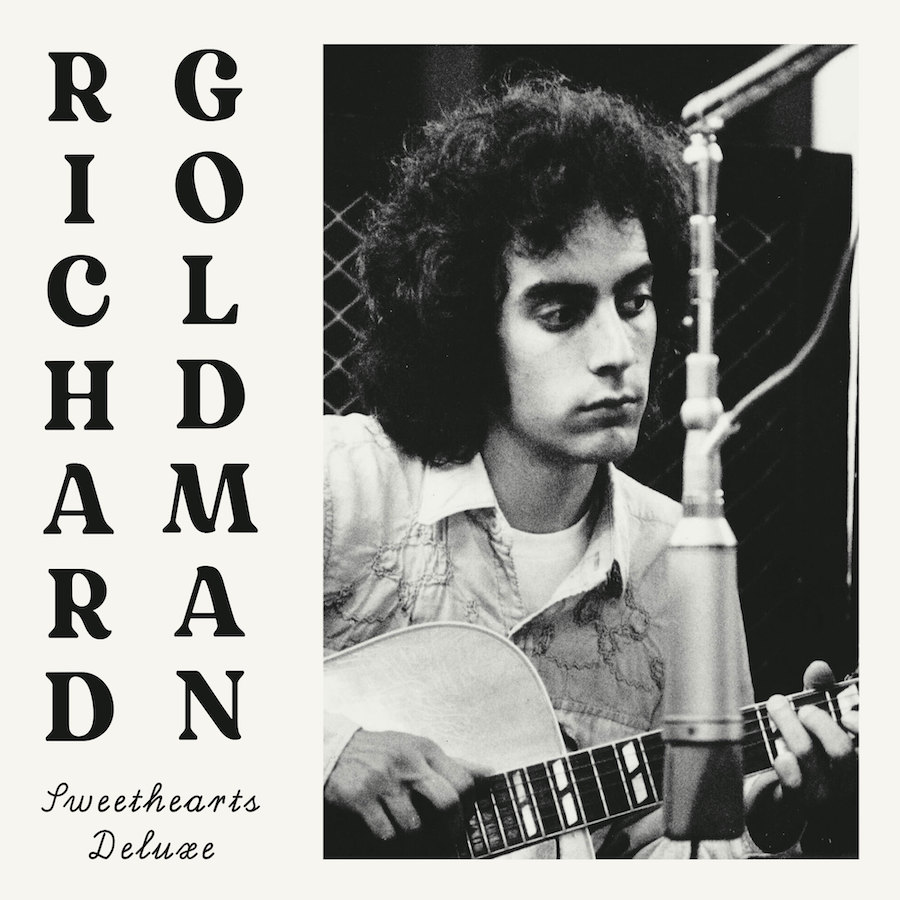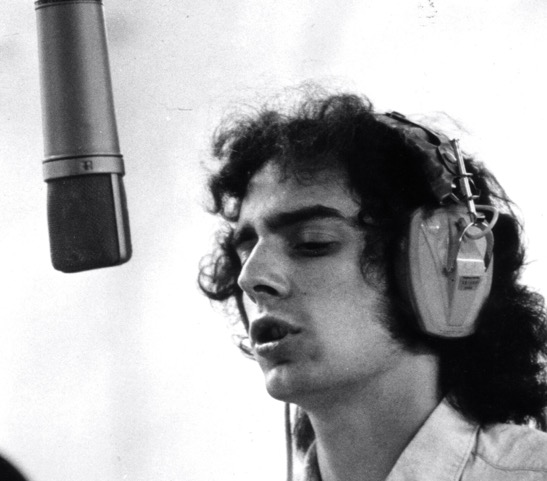
After a decade of relative silence, Cathal Coughlan returns later this month with a terrific new album, Song of Co-Aklan on Damian O’Neill’s Dimple Discs label (O’Neill was the lead guitarist for the Undertones, and played bass in That Petrol Emotion.) It feels like there’s a deserving buzz around the upcoming release—and Coughlan’s return—as no doubt inspired, in part, by the well-received Microdisney reunion shows of a few years back. It’s about time. He’s earned it.
The loosely conceptual album is, to an extent, based around the cut-up, quaquaversal persona of “Co-Aklan” who is more than happy to explain to you why everything feels so fucking crazy these days. It’s an extremely high quality piece of work that should appeal to intelligent people with sophisticated taste in song. (That might even include you, dear reader.) The record features his longtime backing band the Necropolitan String Quartet, augmented by Luke Haines (Auteurs/Black Box Recorder), Sean O’Hagan (Microdisney/High Llamas), Rhodri Marsden (Scritti Politti), Aindrías Ó Gruama (Fatima Mansions), Cory Gray (The Delines) and Dublin-based singer-songwriter Eileen Gogan.
I asked Cathal some questions via email.
The obvious question, why ten years between albums?
Well, it certainly wasn’t a plan, at least not in the way it’s turned out now. After the Rancho Tetrahedron album, for which I’d really knocked myself out and from which I received little/no response, I thought the actual format had perhaps had its day. I really enjoyed doing The North Sea Scrolls, but that was more in the nature of a documented live show, which had the added attraction that, on stage, I could just be a sideman on Luke Haines’ songs, for a good part of it.
I was lucky that people in Ireland and France, mainly, offered me the chance to perform in various live shows after that, where my contribution was mainly that of vocalist. That’s what I most enjoy doing, especially when the musicians are really good, and there isn’t any stress for me outside my own contribution. Also, a couple of those productions, one in tribute to WB Yeats and the other to Bertolt Brecht, got me immersed in high-quality and radical work made by others, which I also really enjoy, when kicked into having to do it. It carried no baggage of concern about Silicon Valley, or the post-2010 young-versus-old columnist ‘wars’, etc..
Around 2016, I realised I was amassing quite a bit of material (including some unused songs I’d written for the Yeats show), and felt that it was time to really give the writing some energy, to perhaps make some digital EP’s. But the material came quite easily, and I resolved to play it live, first. Things developed from there.
Does this feel like a comeback for you? There seems to be a lot of buzz around this album, and I’ve noticed that you’re doing a lot of promotion and interviews.
It’s a strange thing, I’m doing more promotion than at any time in decades. But we’re all existing in this bizarre flux, which even predates the pandemic. So there’s no clear quid-pro-quo in this, for me. I’m glad that a lot of people will have heard about the record, because I thought I was making a record which might deserve a hearing but probably wouldn’t get one. But who knows where this will lead? The old rules do not apply.
The barriers, if you will, between your last album, in the form of a CD that had to be manufactured and wrapped in cellophane and shipped someplace, and the intended audience actually finding it don’t exist anymore. It was The North Sea Scrolls that got me interested to find out what you’d been up to, and I could just dial up Black River Falls on TIDAL without even having to walk across the room. It’s piped into people’s homes now—your music, I mean—so now it’s a matter of convincing people to click play, which is still a hard enough task in an attention economy isn’t it?
It’s in another dimension entirely, to be honest. Things were well on their way to the present dispensation in 2009/10, but for one reason or other, it wasn’t possible to achieve any purchase on social media, etc. I’m looking on the streaming services as a set of social networks, whose contribution is purely promotional, and can potentially get the music heard in ways that other avenues can’t, especially without playing live. You’re of course right that the ease of global access is there as never before, as long as listeners know they might like to hear the music.
I may be kidding myself about that mental model, but there’s no other way of remaining motivated, that I know of, when the future need to survive inevitably heaves into view. I’m glad some people still buy physical media, is all I’ll say! I’ll still purchase anything I’ve come across on streaming services, that I like, even if as just a download, which I know is a dying format…
Was Song of Co-Aklan recorded before the pandemic, or in the midst of it?
Before and in the midst. A bunch of the songs were performed live in 2019, and I had intended that to be stage 1 in the rollout of Co-Aklan, hideous golem of post-globalisation retrenchment.
But various personal stuff intervened, and more live work was off the agenda, so I began recording (at a very convivial studio also used by people I admire, like Charles Hayward and Daniel O’Sullivan—run by Frank Byng, himself a very fine drummer who has played with the above, as well as with Kev Hopper’s group Prescott, and many others).
Through some freak of luck, despite my stop-go work pattern, Nick Allum got all his drum tracks down, some guitar, some bass and cello were done, and a few mixes had been completed, before the pandemic really kicked in. I also got Sean O’Hagan’s parts on a couple of the songs done.
Things got weirder after that, but it was clear that an old-school ‘album’ was at hand…
Did you do it (or any of it) remotely over the Internet, or were you always in a studio?
Well, it then became a mixture, in effect. James and Audrey (guitar/cello) recorded a number of their parts remotely. Rhodri Marsden recorded a lot of his signature Zeuhl bass guitar remotely, and some bassoon (me to RM: “I want this to sound like Henry Cow playing ‘The Laughing Gnome,’ can we do that?”). And then there was Cory Gray in Portland, and Eileen Gogan in Dublin.
I wasn’t sure whether I could produce actual mixes for myself, outside of a studio, with no pro engineer, so that’s where a lot of time went, but I’m glad I persevered with that. I can actually be quite methodical with sound, I was astonished to find! The ceaseless skittishness of yore has…altered a bit, if not departed. One song does have an atonal trap coda, with a robot singing aspirational multi-level marketing gibberish.
I’m someone for whom how music “sounds” is a big part of the enjoyment, and I appreciated the title track’s staticky white noises that come in about a minute into the song, and that killer lead bass line played by Luke Haines. There’s a lot of air around each instrument, and your voice. Now that you have the home recording skills under your belt, do you intend to be more prolific moving forward? Another barrier removed, right? You just need a laptop.
I’m hopeful that it will, but as always, it can break out into some fairly basic deciders, such as (big one): do I need live drums on this, and what does the drummer need to hear in order to give a good performance? Since the album was finished, I’ve been getting a bit synthy with some new solo stuff, but it’s important to retain the ‘pro-noise’ disposition there, the way I hear it in current work by Gazelle Twin or older work by This Heat or Suicide, all of which still inspires me. It’s a bit of a cliché to say it, but electronics can sound antiseptic, and unless that’s your actual schtick and intention, today’s technology does mean you have no excuse for ending up there unintentionally.
The “Song of Co-Aklan” chorus is a pretty ideal combo for me - the guitars jangle like The Byrds, while alongside that the synths crackle like a post-air raid fire. You can’t really plan for these things.
I’ve read that Co-Aklan is meant to be an alter ego, how so?
Well, when contemplating releasing recorded music again, I was once more reminded that tagging records with my limited-feasibility birth name has always (since 2000) felt a bit sappy and by-rote, though I’m far from being ashamed of my family or where we originate. So I decided to start a process. Then, a friend of mine did this chaotic cut-up on one of my old song lyrics, using online translation and re-translation, and out popped Co-Aklan.
I thought - perfect! It’s phonetic from the off, it isn’t pretending to be a Latin word for ‘trustworthy money’ or some neoliberal liturgical shit like that, and could readily be transliterated into other alphabets in order to secure new markets. Had one the slightest interest in that kind of thing.
A lot of the songs relate to shaky, misremembered and contested identities, and the fear and rage which can result from them, so Co-Aklan and his advent provide that resonance, on a semi-conscious level, though semantically, it’s just another trading name.
Will you keep using the Co-Aklan moniker?
Yes, I will gradually ramp up its usage in the coming couple of years. I think Cristabel Christo’s and Greg Dunn’s totemic cover image for this album give me the ideal platform for saying, “Look, here he is, and he’s staying for a while.” Like the ‘pagan idol’ on a Martin Denny sleeve, only he sings! Wish I’d done this sooner, but it’s taken years of limbo to get this confident, weirdly.

Front cover painting by Cristabel Christo, based in part on photos by Gregory Dunn/Stoneybutter.
What else have you been up to during the COVID-19 lockdown?
Hiberno-theocratic synth-pop is a genre all but shunned by the modern world of arts and culture, and hence it’s in this zone that Grammy-winning producer/musician Jacknife Lee and I have chosen to celebrate our being back in regular contact. We first became acquainted under the generous umbrella of Dublin punk/arts magazine Vox in the early 1980s. The monochrome consciousness and ethics of the Ireland we both grew up in has been hitched to a stark and sometimes intentionally degraded electronic palette to produce an effect which is often poignant but sometimes brutal. Forward to the hit parade! in short. The collaboration was masses of fun. Never in recent memory have I dared reference Thomas Leer’s 1978 single “Private Plane,” only to have the respondent say, “That’s the first single I owned”
Other than the Telefís album and the various monochrome pagain things we’re hatching for that, I’ve been working as part of a collective effort on a project called Bring Your Own Hammer, wherein musicians with Irish links have teamed up with a group of historians to create musical work based on the historical record of crimes and other lowlights which occurred in the Irish diaspora, mainly in Britain and the US, mainly in the 19th century. It’s going really well, and one thing I’m working on is a collaborative track with Sean O’Hagan. Probably a vinyl release next year, and some online work around that.
Also, there’s been the recurrent episodic search for new spaces in and around our small house in which to “film” myself for each next video extravaganza - sometimes in a robe, wearing one boxing glove, sometimes bouncing lamely around outside the shed. Looks like the SoCA album will have given rise to FIVE videos, before we call a halt. they vary from the sketchy to the conceptual to the beautiful. We’re of course not talking glossy 80s epics here, but it’s a strange realisation for me!
Preparatory work for the next Co-Aklan instalment and the second Telefís album are also in hand.
Song of Co-Aklan is available from March 26th.
“Owl in the Parlour,” the album’s second single.







